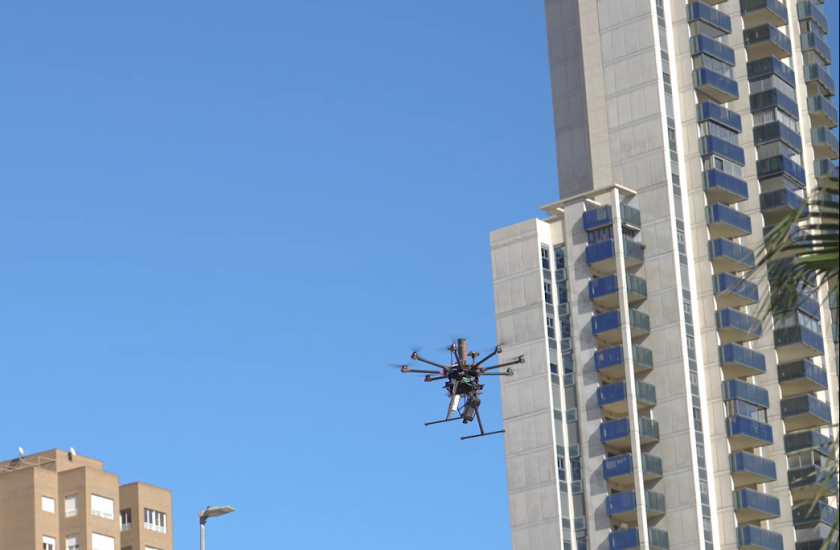Urban environments significantly impact satellite availability; using multi-constellation (GPS and Galileo) was shown to improve both availability and dilution of precision (DOP) in such degraded reception conditions. This is one of the key findings of the second round of flight tests from the Support to Standardisation Actions for EGNOS and Galileo in the U-Space (SONORA) project, recently completed in Benidorm, Spain, and announced today.
Other conclusions of the flight tests included:
- Single vs. Dual Frequency: Switching from single to dual frequency configurations resulted in GPS performance degradation due to satellite availability loss, a situation expected to improve once GPS constellation is fully renewed. For Galileo, an improvement was observed when using dual-frequency measurements (E1+E5). This improvement is expected to further increase in these frequency bands as more GPS satellites transmitting in L5 become available.
- EGNSS Augmentation and Cybersecurity Protection: The Galileo HAS service showcased promising results, reaching decimeter-level accuracy. Moreover, Galileo OSNMA has shown protection against navigation spoofing attacks without a significant impact into other performances.
- Position vs Autopilot errors: Analysing UAS navigation errors, it has been observed that positioning error (NSE) is significantly larger than autopilot error (FTE) for this particular trial. A different usage of vertical references has also been identified, which could be a potential risk for operations if a CAR (Common Altitude Reference) is not used.
- GNSS+IMU Hybridisation: Hybrid solutions were shown to further improve on the accuracy and availability of the GNSS-only solution, which are key to ensure a smooth navigation in urban environment.
“Based on further analysis of the test results, the project will provide feedback to the UAS regulatory agencies with the goal of streamlining the authorization processes for these kinds of medium-risk Specific Category operations (SAIL III-IV),” said a programme press statement.
“The second round of flight was conducted in an urban environment and aimed to analyze the challenges of drone navigation in such a complex setting. Participants evaluated the capabilities and performance of GNSS-alone and hybrid GNSS solutions, which are navigation systems that combine GNSS technology with other sensors. These include cameras, lidar light detection and ranging technology to measure precise distances and movements in real time, IMUs (Inertial Measurement Units), odometers, and other possible. Such systems are used to improve the accuracy and reliability of navigation in urban and indoor environments, where the GNSS signal may be weak or interrupted.
“The main goal of this second and final test was to collect relevant data on urban aerial mobility for unmanned aerial systems. To do so, the focus was put on assessing GNSS-alone solutions in different configurations, including the new EGNSS service HAS, as well as on analyzing the capabilities and performance of hybrid GNSS solutions; for the test the hybrid solution considered combines GNSS technology with inertial measurement units (IMU).”
Funded by the European Union’s research, development, and innovation programme, the project is implemented by a consortium led by EY Belgium and including GMV, CATEC, RP Legal & Tax, and MCI.
(Image: SONORA programme)




